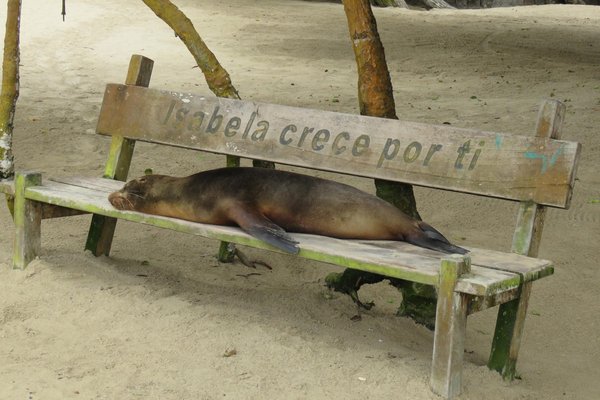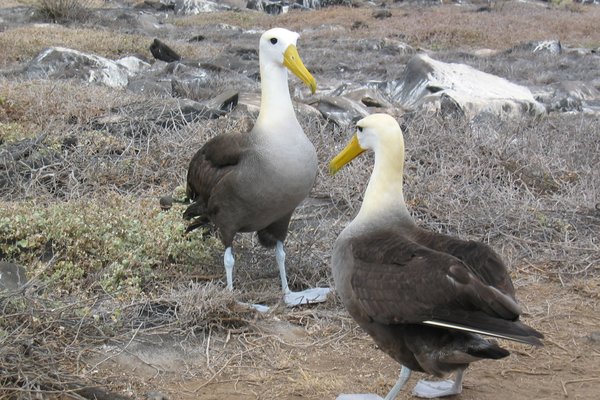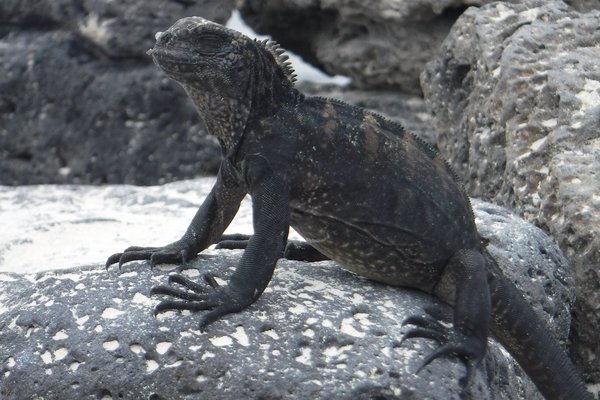Ecuador
Galapagos Islands
The Galápagos Islands comprise an archipelago and marine reserve known for their vast number of endemic species and Charles Darwin's studies, which led to his theory of evolution by natural selection.
The islands are relatively young and of volcanic origin. Together with their isolated position, this has led to a highly unique flora and fauna which inspired Charles Darwin following his visit in 1835. The marine life is especially rich due to its location at the confluence of three ocean currents.
Community Perspective: “A great thing about the Galapagos is that the animals WILL turn up on cue. And on top of that of course they are incredibly tame.”, Solivagant sums up the experience well. The choice to make here is visiting on a multi-day boat tour (Travel Addicts) or organizing it all by yourself from a base (Tonisan, Jay, Els, and, thorough as always, Clyde and Fréderic).
Site Info
Official Information
- Full Name
- Galapagos Islands (ID: 1)
- Country
- Ecuador
- Status
-
Inscribed 1978
Site history
History of Galapagos Islands
- 2009: Removed from Danger list
- 2007: In Danger
- Serious conservation threats have intensified
- 2001: Extended
- To include the Galapagos Marine Reserve
- 1995: Extension deferred
- Marine extension deferred again - this time at request of Ecuador
- 1994: Extension deferred
- Marine Reserve: deferred until mitigative action taken regarding threats
- 1978: Inscribed
- Inscribed
- Type
- Natural
- Criteria
- vii
- viii
- ix
- x
Links
- UNESCO
- whc.unesco.org
- Official
-
- galapagos.gob.ec — Parque Nacional Galapagos
- Related
-
- nytimes.com — On Galápagos, Revealing the Blue-Footed Booby’s True Colors
All Links
UNESCO.org
- whc.unesco.org — whc.unesco.org/
Official Website
- galapagos.gob.ec — Parque Nacional Galapagos
Related Resources
- nytimes.com — On Galápagos, Revealing the Blue-Footed Booby’s True Colors
News Article
- Dec. 25, 2024 indepthnews.net — Ecuador Opens World Heritage Natural Site Galapagos Islands to US Military
- March 19, 2024 amp.cnn.com — Galapagos Islands to double tourist entry fees amid concerns over rising visitor numbers
- Sept. 21, 2023 theguardian.com — Galápagos Islands tightens biosecurity as avian flu threatens unique species
- Aug. 30, 2022 bbc.com — Ecuador fears Galapagos tortoises were hunted and eaten
- Jan. 10, 2022 abcnews.go.com — Tallest Galapagos volcano erupts, spewing lava, ash
- May 18, 2021 bbc.com — Galapagos Islands: Erosion fells Darwin's Arch
- Aug. 17, 2020 washingtonpost.com — A huge fleet of fishing boats is threatening the extraordinary marine life of the Galapagos
- Feb. 8, 2020 news.sky.com — Partial descendant of 'Lonesome George' species found near volcano
- Dec. 23, 2019 voanews.com — State of Emergency in Ecuador From Diesel Spill on Galapagos
- June 19, 2019 bbc.com — Ecuador 'allows US military planes to use Galapagos island airfield'
- June 14, 2019 independent.co.uk — Unique love song of Galapagos finches dying out because of parasites brought in by humans
- March 29, 2019 sciencedaily.com — Galápagos islands have nearly 10 times more alien marine species than once thought
- Feb. 20, 2019 straitstimes.com — Giant tortoise believed extinct for 100 years found in Galapagos
- Jan. 12, 2019 theguardian.com — Galápagos island gets its first iguanas since Darwin after mass-release
- Dec. 22, 2018 nytimes.com — As Seas Warm, Galápagos Islands Face a Giant Evolutionary Test
- Oct. 6, 2018 dw.com — Galapagos Islands: 123 baby tortoises reported stolen
- June 19, 2018 telesurtv.net — Galapagos: Volcano Erupts After Series of 9 Earthquakes
- March 19, 2018 thejakartapost.com — Tonnes of garbage cleaned up from Galapagos coast
- Aug. 25, 2017 qz.com — “Ghost poachers” are still at large after the biggest shark-smuggling bust in Galapagos history
- March 22, 2016 news.nationalgeographic.com — New Galápagos Sanctuary Has World’s Highest Abundance of Sharks
- Oct. 22, 2015 telegraph.co.uk — Scientists identify new Galapagos giant tortoise species
- June 26, 2015 theecologist.org — Galápagos rebellion against foreign investment in hotels, golf courses, luxury tourism
- May 26, 2015 telegraph.co.uk — Galapagos Wolf volcano erupts for first time in 30 years
- March 14, 2015 huffingtonpost.com — Baby Tortoises Born On Galapagos Island For The First Time In A Century
- Feb. 6, 2015 whc.unesco.org — Ecuador intensifies actions to reduce risks from ship stranding in Galápagos Islands
- Oct. 29, 2014 newsweek.com — Galapagos Giant Tortoise Brought Back From Brink of Extinction
- May 27, 2014 bbc.com — Avian malaria threatens Galapagos bird species
- May 22, 2014 bbc.com — Galapagos emergency over stranded cargo ship
- May 26, 2013 key103.co.uk — Google To Add Galapagos Islands To Street View
- Nov. 15, 2012 news.msn.com — Rat kill in Galapagos Islands targets 180 million
- June 26, 2012 washingtonpost.com — Last of the Pinta island giant tortoise subspecies dies at Galapagos
- Jan. 27, 2012 gadling.com — New Galapagos Islands travel regulations go into effect next week
- July 29, 2010 unesco.org — List of World Heritage in Danger: World Heritage Committee removes Galapagos Islands (Ecuador)
- Dec. 14, 2009 independent.co.uk — Galapagos under pressure from tourism and urban growth
- Aug. 20, 2008 afp.google.com — Galapagos under botanical alert for medfly invasion
- June 4, 2008 afp.google.com — The Cerro Azul volcano on Isabela Island erupted between Thursday and Sunday, unleashing a heavy flow of lava but not affecting the islands' famed giant tortoises as first feared
- April 25, 2008 ipsnews.net — A U.S. company, Planktos Inc., plans to dump 100 tonnes of iron dust into the ocean near Ecuador's Galápagos Islands in an effort to reduce carbon dioxide, despite opposition from environmental groups and marine scientists.
- Feb. 1, 2008 abcnews.go.com — Ecuador investigates Galapagos Islands slaughter of more than 50 sea lions.
- Oct. 24, 2007 english.people.com.cn — Ecuador introduces entry cards to protect Galapagos Islands
- June 23, 2007 signonsandiego.com — Ecuador says tourism is threatening the Galapagos Islands and has asked UNESCO to add the habitat that inspired the theory of evolution to its endangered list.
Community Information
- Community Category
- Wildlife habitat: Fauna
Travel Information
High entrance fees
Recent Connections
-
Oceanic Dolphins
Common Bottlenose, Pantropical Spotted…
-
Perfect Inscriptions
1978 -
Endemic Species that include the WHS name
Galapagaos Giant tortoise, Galapagos Ma…
Connections of Galapagos Islands
- Individual People
-
-
Thor Heyerdahl
Following the success of the Kon-Tiki Expedition, Heyerdahl organized and led the Norwegian Archaeological Expedition to the Galapagos Islands. The group investigated the pre-Columbian habitation sites, locating an Inca flute and shards from more than 130 pieces of ceramics which were later identified as pre-Incan. (1952) -
Christopher Columbus
Their official Ecuadorian name is "Archipiélago de Colón" or "Islas de Colón". However, Columbus never went there. -
Visited by Nicolas Hulot
Émission 25 : La vie pas à pas (Équateur, Iles Galápagos, 2004) -
Charles Darwin
Research for his evolutionary theory -
Tupac Inca Yupanqui
may have visited themSee en.wikipedia.org
-
Cousteau
1971
-
- Geography
-
-
Volcanic plugs
Pinnacle RockSee en.wikipedia.org
-
Deepest
"The islands have been formed by volcanoes rising out of a submarine platform at a depth of 1,300m. In outer waters, ocean depths fall to 4,000m except for the existence of several seamounts which rise to less than 100m below sea level." AB (Exact location of site boundary not clear! The park includes "all waters within 15 nautical miles of a baseline joining the outermost points of the Galapagos Islands"). -
Largest area
133,000 sq kms -
Archipelagos
(Volcanic) Official name: Archipi?lago de Col?n. The group consists of 15 main islands, 3 smaller islands, and 107 rocks and islets. All are inscribed - with only a few built up areas excluded from the NP -
Volcanic Cone
"At the "Devil's Crown", an underwater volcanic cone and coral formations are found."See en.wikipedia.org
-
Pacific Ocean
-
Recently Active Volcanoes
One of the world?s most active volcanic areas, with more than 50 eruptions in the past 200 years. Six of the volcanoes are still active (1 on Fernandina and 5 on Isabela). The most recent explosion was Cerro Azul on Isabela in September of 1998. -
Equator
-
Caldera
Fernandina IslandSee en.wikipedia.org
-
Marine sites
133000 sq kms M (after extension in 2001), 76651 sq kms T
-
- Trivia
-
-
Google Doodles
May 31, 2020, Celebrating the Galápagos IslandsSee www.google.com
-
In Video Games
Civilization VI -
Scuba Dive Liveaboard
-
- Ecology
-
-
Oceanic Dolphins
Common Bottlenose, Pantropical Spotted, Striped, Risso’s, Common, Frasers dolphins, Orca (source)
-
Notable examples of island gigantism
Tortoises -
Notable examples of multiple speciation in one site
Finches -
Tombolos
Bartholome Island -
Volcanic Hotspots
Galapagos HotspotSee en.wikipedia.org
-
Penguins
Galapagos -
Natural Arches and Bridges
"The remnants of Darwin's Arch, a natural rock arch which would at one time have been part of this larger structure, are located less than a kilometre from the main Darwin Island, and it was a landmark well known to the island's few visitors. It collapsed in May 2021. The two remaining stumps are now nicknamed the "Pillars of Evolution"."See en.wikipedia.org
-
Lagoons
-
Reintroduced Species
39 Espanola tortoises have been introduced to Pinta. They are regarded as being the closest genetic match to the Pinta tortoise - of which only "Lonesome George" remains. Whilst there remains a slight hope that George might father hybrid offspring with captive Espanola tortoises, those released are sterile. If they survive, and no hybrid emerges, it is the intention to release fertile creatures with the objective of re-engineering a full "ecosystem" of which a tortoise presence of some sort is an essential element. -
Critically endangered fauna species
Galapagos Petrel - "10,000-19,999 mature individuals" & Waved Albatross - ca. 34,700, of which 34,660 live on the Galapagos & Galapagos damsel (a fish) and Fernandina Giant Tortoise (both possibly extinct).See www.birdlife.org
-
Anchialine Habitats
See www.tamug.edu
-
Notable Extremophiles
Pompeii worm (an extremophile found only at hydrothermal vents in the Pacific Ocean) - wikiSee en.wikipedia.org
-
Seals
fur seal -
Cloud forest
An unusual form of cloud forest is found between 1500m and 1700m on the mountains and volcanoes of the larger islands (UNEP-WCMC) -
Lava tubes
Sta Cruz - near Bellavista -
Sea Stacks
Kicker Rock (off San Cristobal). See No 7 at linkSee prafulla.net
-
Lazarus species
Fernandina rice rat: thought extinct in 1996 (last seen 1980) but found again in the late 1990s. Santiago Galápagos mouse: thought extinct and last recorded in 1906, but was rediscovered in 1997. -
Captive Breeding Centre
Tortoise and Marine Iguana at Darwin Research Institute -
Albatross breeding sites
Espanola (Hood Island) - Galapagos (or Waved) -
Coral
marginal environment for coral reefs (Coastal WHS) -
CMAR
-
Molluscs
"Darwin’s finches, mockingbirds, land snails, giant tortoises and a number of plant and insect groups represent some of the best examples of adaptive radiation which still continues today." -
Flamingos
Galapagos is home to a small population of a few hundred (American) flamingos. -
Sharks
Galapagos, Hammerhead, Whaleshark, Silky -
Feral Animals
"Introduced plants and animals, such as feral goats, cats, and cattle, brought accidentally or willingly to the islands by humans, represent the main threat to Galápagos. Quick to reproduce and with no natural predators, these alien species decimated the habitats of native species."See en.wikipedia.org
-
Mangroves
"The variety of geomorphological characteristics (...) comprises rocky, vertical cliff face, mangrove, sandy beach, lagoon, embayment, and hypersaline panne habitats." (IUCN Ev) "Mangrove forests can be observed" on Fernandina Island."See en.wikipedia.org
-
Whales
"Several species of Baleen whales occur (fin, mink, humpback) as well as toothed whales (pilot, killer) and sperm whales are regularly encountered." (IUCN Ev) -
Pelicans
On Fernandina IslandSee en.wikipedia.org
-
Endemic Species that include the WHS name
Galapagaos Giant tortoise, Galapagos Marine Iguana, Galapagos Lava Lizard, Galapagos Fur Seal (Arctocephalus galapagoensis) , Galapagos Sea Lion, Galapagos Land Snail, Galapagos Cactus (Opuntia galapageia) -
Turtles and tortoises
Habitat of Galápagos giant tortoise
-
Endemic Bird Species
Galapagos Finches (13), Mocking birds (4), Flycatcher, Rail, Hawk and Heron
-
- Damaged
-
-
Affected by El Niño
Crit ix: "the Marine Reserve, situated at the confluence of 3 major eastern Pacific currents and influenced by climatic phenomena such as El Niño, has had major evolutionary consequences and provides important clues about species evolution under changing conditions"
-
- World Heritage Process
-
-
Perfect Inscriptions
1978 -
Extended
2001: To include the Galapagos Marine Reserve -
Marine extension
2001: the addition of the Galápagos Marine Reserve -
Inscribed on all 4 Natural criteria
-
First inscriptions
Ecuador - 1978 (Quito was also inscribed at the same session, however Galapagos got reference number 1 -
Former In Danger List sites
2007 - 2009: Serious conservation threats have intensified
-
- Human Activity
-
-
Piracy
"(...) during the Golden Age of Piracy various pirates used the Galápagos as a base for raiding Spanish shipping along the Peruvian coast." "Until the early 19th century, the archipelago was often used as a hideout by (mostly English) pirates who attacked Spanish treasure fleets carrying gold, silver, and supplies from Peru to Panama and Spain."See en.wikipedia.org
-
- Constructions
-
-
Lighthouses
At least 4See www.unc.edu
-
Prison
Galapagos Floreana and Isabela have been used as Prison colonies
-
- WHS on Other Lists
-
-
World Biosphere Reserves
Archipielago de Colon (Galápagos) (1984) -
PSSA
-
Biodiversity hotspot
Tumbes-Chocó-Magdalena -
Alliance for Zero Extinction
Áreas costeras de Fernandina y del occidente de Isabela: Camarhynchus heliobates (Mangrove Finch), Isla Española: Phoebastria irrorata (Waved Albatross) -
WWF Global 200
Terrestrial, Deserts and Xeric Shrublands: (132) Galápagos Islands Scrub; and Marine, Tropical Upwelling: (215) Galápagos Marine -
Located in a TCC Territory
Galapagos Islands -
Centres of Plant Diversity
PO7 Galapageian Floristic Province (Caribbean Region) - "The islands have relatively high species diversity for such young oceanic islands. Endemic flora such as the giant daisy trees Scalesia spp. and many other genera have also radiated on the islands, part of a native flora including about 500 vascular plant species of which about 180 are endemic." -
Ramsar Wetlands
Humedales del Sur de IsabelaSee rsis.ramsar.org
-
- Timeline
-
-
Miocene
In comparison with most oceanic archipelagos, the Galapagos are very young with the largest and youngest islands, Isabela and Fernandina, with less than one million years of existence, and the oldest islands, Espanola and San Cristobal, somewhere between three to five million years. (Wiki)
-
- Science and Technology
-
-
Scientific Developments
Theory of Evolution by Natural Selection
-
- Visiting conditions
-
-
Foreigner prices
100 USD for foreign tourists, 50 USD for Andean Community and Mercosur nations and 6 USD for Ecuador nationals. -
High entrance fees
120 US dollar (100 US dollar conservation fee + 20 US dollar transit control ticket, 2017)
-
- WHS Names
-
-
Protection of a single named species
"The Galápagos or Galapagos Islands are named for their giant tortoises, which were more plentiful at the time of their discovery. The Spanish word galápago derives from a pre-Roman Iberian word meaning "turtle", the meaning it still has in most dialects." (Wikipedia)
-
News
- indepthnews.net 12/25/2024
- Ecuador Opens World Heritage Natur…
- amp.cnn.com 03/19/2024
- Galapagos Islands to double touris…
- theguardian.com 09/21/2023
- Galápagos Islands tightens biosecu…
Recent Visitors
Visitors of Galapagos Islands
- Albert
- Alberto Rodriguez Gutierrez
- Alex Baranda
- Ali Zingstra
- ALS
- Ammon Watkins
- Andrea Szabo
- AndreaTLV
- Anne
- Atila Ege
- Bamse
- Bill Maurmann
- Bram de Bruin
- Brett Baumann
- brornt
- Carlos Sotelo
- chiuliqi
- Cirene Moraes
- Claire Bradshaw
- Clyde
- Colossus
- Corinne Vail
- Csaba Nováczky
- CynthiaSam
- dave wood
- Delphine Delaunay
- Dwight Zehuan Xiao
- Edisonb420
- Els Slots
- Eva Kisgyorgy
- Felicité
- Fernweh
- Frédéric M
- Garrett
- Gary Arndt
- Gernot
- giloudepuertorico
- Gjert
- Harry Mitsidis
- hivander385
- Iain Jackson
- IreneKD
- janameerman
- Janos
- Jan Zimmermann
- Jay T
- jess4sythe
- João Aender
- JobStopar
- Joel on the Road
- KarenBMoore
- KeithBailey
- Kelly Rogers
- kelseyyurek
- ko9757
- kristinapunzi
- Lameduck99
- Linz
- Lithobates
- Loic Pedras
- Lucas Del Puppo
- Lucio
- Ludvan
- Luis Filipe Gaspar
- lynnz317@aol.com
- Mahuhe
- marcel staron
- Martin
- Michael Ayers
- MichaelH
- Michael Novins
- Mihai Dascalu
- MMM
- Monica66
- Monica Tasciotti
- MoPython
- Morodhi
- Naim Y
- Nicole Lampos
- Nihal Ege
- Nolan B.
- Pat Martin
- Patrik
- Piotr Wasil
- pontobaggins
- Randi Thomsen
- Riccardo Quaranta
- Roger Ourset
- Roman Bruehwiler
- Rosemary
- RYU
- saraleonela
- sbshipway
- Shandos Cleaver
- Simonh
- sliny
- Solivagant
- Sutul
- Svein Elias
- Tamara Ratz
- Tevity
- Thomas Buechler
- Thomas van der Walt
- Timonator
- Timothy C Easton
- Tonisan
- tony0001
- Toxicologist
- V&M
- Waxwing
- Weecheng
- Wo_ko
- Xiquinho Silva
- ZCTLife
- Zoë Sheng
Community Reviews
Show full reviews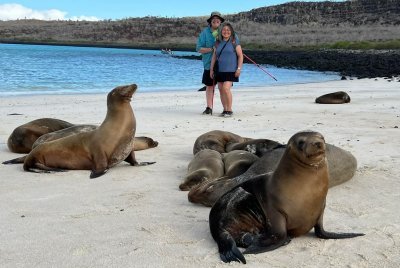
My Wife and I took an amazing trip to the Galapagos Islands in 2024. We took a four day cruise to explore the eastern islands.
HIGHLANDS (SANTA CRUZ ISLAND)Dry landing. A 45-minute bus ride will take us to the Santa Cruz highlands, located in the northwest of Puerto Ayora, where we will find a natural reserve with giant tortoises. * These enormous and slow-moving reptiles are responsible for the island’s name and therefore approaching them in their humid and forested abode is always an inspiring adventure. They can weigh between 250 and 300 kg and can live up to 200 years. Additionally, travelers can walk inside surprising lava tubes.Difficulty level: easyType of terrain: flat and muddy
EL BARRANCO Prince Philip ́s Steps (Genovesa Island)Be marveled at the variety of sea life that uses the crevices of the lava cliffs for shelter.Red-billed Tropicbirds fly overhead, switching between their nests and the bay, and a small colony of fur seals may be found near the landing site. You will be dropped off at a steep stairway that begins on rocks at the foot of a path that leads through a seabird colony full of Nazca and Red-footed Boobies. At the plateau, the trail continues inland allowing you to see more nesting booby colonies in the thin Palo Santo Forest. Near the end of the trail, over a rocky lava plain,Wedge-rumped Storm-Petrels can be observed flying in all directions. If you are lucky, you may catch a glimpse of a Short-eared …
Keep reading 0 comments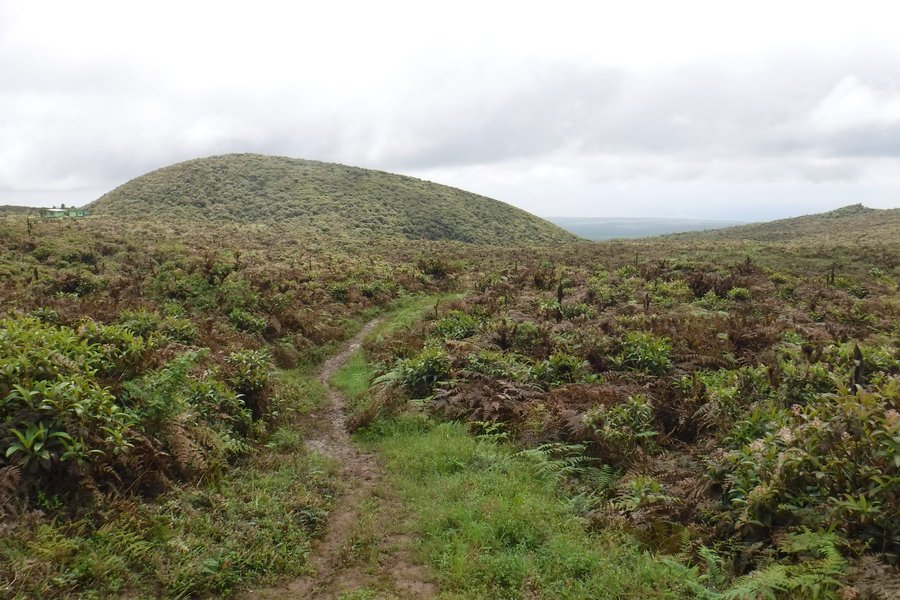
Disclaimer: this review will be very long. However, the Galápagos Islands largely deserve it. The first site inscribed on the list is an exceptional one. My expectations were immeasurable (after all, I am a biologist, a birder and a scuba diver, the Galápagos should be a paradise for me!), but they have been surpassed! Story day by day.
Days 1-2: LogisticThe first two days were filled with travel and acclimatisation. I left Quebec directly for the Galápagos via Quebec City - Montreal (due to a delayed flight) - Toronto - Quito - Guayaquil (only a short stopover without getting off the plane) and finally Isla Baltra. There is a ferry to Isla Santa Cruz and a bus waiting for travellers to take them to Puerto Ayora. In February 2020, the access fees to the national park were 100$, plus another 20$ for some kind of tourist card. I completed this second day by checking out the dive shops and buying my ferry ticket for the first hour the next morning. Off to the stunning Isabella.
Days 3-4: Wildlife viewing on Isabella
After arriving in Puerto Villamil, I spent two days walking the trails around the city. The beach, first of all, is beautiful and teeming with shorebirds, pelagic birds, marine iguanas (I loved these! See how cool they are!) and colourful crabs. A path of almost 6 km leads to the Muros de las Lagrimas, an abonimation built by inmates in the days when Isabella was a penitentiary colony. …
Keep reading 0 comments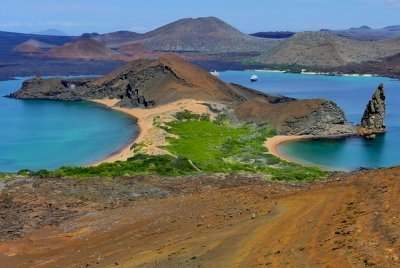
I visited this WHS in May/June 2019. I arrived in Baltra Seymour GPS airport from Quito and I was based on Santa Cruz island for 9 nights/10 days going out on 8 different boat trips to different uninhabited islands and the inhabited island of Floreana.
All the praise the Galapagos Islands receive is fully justified and my already high expectations were met. It is a very fragile natural environment which can easily be lost or degraded in no time (as has already happened in the not so distant past) but I must say that on the whole the Ecuador government and national park management system are doing a very good job to control and manage the effects of tourism on the Galapagos islands.
The most outstanding feature of the Galapagos is the fact that most wildlife is very tame and not afraid of humans. Actually more often than not, the wildlife was very curious to see us and considered us just as another species NOT as a predator. This is true on land as well as in the marine environment. Birdwatching enthusiasts with very big telescope lenses will immediately find out that such expensive equipment is almost useless here - a good zoom might come in handy out at sea but most species will be literally at arm's length.
Everyday was a different highlight for me as I was lucky with the weather and no boat trip got cancelled. Moreover, I had tried to vary boat trips …
Keep reading 0 comments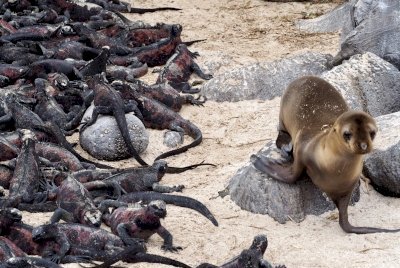
Visited August/September 2018
As a nature lover, the Galapagos Islands had always been on my bucket list. And they didn't disappoint a bit.
Being quite a remote destination, I assumed that probably I'll never go back, so I decided to spend most of my two week vacation there. I wanted to visit a few diferent islands in order to see diferent species of plants and animals and it took time.
There are two ways of seeing the islands, one is on a cruise and the other one is staying a few days in some of the inhabited islands and taking day tours from there. The second option is becoming more and more popular, and it was what I did because it gives you the chance to enjoy local life.
I visited three inhabited islands, Santa Cruz, Isabela and San Cristóbal, and took several tours. I was very interested in seeing some specific species, so I read a lot before chosing the tours I wanted and booked everything online. It is not necessary, unless you are a planner or you really want to take a specific tour. I was offered all the tours while I was already there. End of August and September are considered low season there, because there is less sunlight (although it's dry season), it is less warm, the water is pretty cold and the seas are rougher. But it is a great time to see lots of marine life, and some species are …
Keep reading 0 comments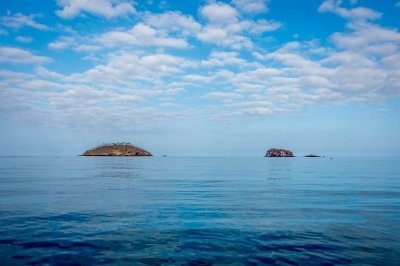
What can you say about the Galápagos Islands that hasn’t been said a thousand times before? They are beautiful. They are important and historic. And, as the world's first UNESCO World Heritage Site, they should be at the top of nearly all travelers bucket list - they were for us.
We'd spent over 10 years hoping to visit and a some incredibly cheap last minute airfare deals made it possible. We spent a week on the Ecuador mainland visiting Quito and the volcanoes, but the islands were our real destination. We were incredible lucky to find a good deal on a one-week cruise of the northwest of the Galapagos (itinerary B), including Baltra, Santa Cruz, Genovesa, Santiago, Isabela and Fernandina.
Actually, despite its fame, these islands are infrequently visited due the remoteness of the islands and limited permits from the government that are available (and the prohibitive cost, something that was a problem for us for a long time). But for this who do visit here, they will be immensely rewarded.
It is in these remote islands that animal evolution took a turn to...the weird. You’ve got so many unusual Galápagos Islands animals: flightless cormorant birds, warm weather penguins, lizards that swim, and many other unusual animals. These unusual animals inspired naturalist Charles Darwin’s study and eventual theory of evolution by natural selection. This important scientific discovery fundamentally changed the way we view our natural world.
We found the best way to explore this part …
Keep reading 0 comments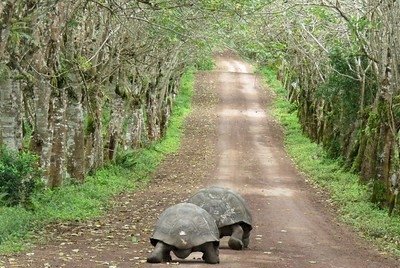
The Galapagos Islands don’t need a long introduction: they were among the first batch of inscriptions in 1978 (actually it was the very first on record) and they were also a shoo-in at our Top 200 WHS. One can ‘do’ the Galapagos either via an accommodated cruise or a self-arranged land-based alternative, which has become more feasible and popular in the last 10 years. For me, the choice was clear quickly: to be ‘locked up’ on a rather small cruise ship for at least a week with strangers did not seem appealing to me at all. Also, I am not a fan of daily water-based activities like snorkelling and swimming. So I based myself in the town of Puerto Ayora on Santa Cruz island, the largest town on the Galapagos Islands.
Puerto Ayora nowadays is a surprisingly touristy and affluent city. It isn’t unlike a Greek harbour town, with tourists milling around in the streets at all hours and daily departures by ferries to other islands. I had planned on taking two organized day tours from here: to North Seymour and Bartolomé. But unfortunately the latter got cancelled because of too few bookings. Instead of Bartolomé I eventually choose Isabela island. I spent the rest of my time on Santa Cruz itself.
Santa Cruz is far from pristine, but a good spot nonetheless to see certain species – in particular the giant tortoise. Probably the first stop for every tourist in Santa Cruz is the Charles Darwin Research …
Keep reading 0 comments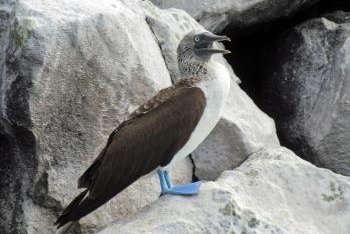
The Galápagos Islands are a nature-lovers dream, home to giant tortoises, iguanas, sea lions, penguins, flamingos, pelicans, Darwin's famed finches, frigates, and, my favorite, the blue-footed booby. And that's just on land. Rest assured, if you are hoping to see wildlife, you will not be disappointed with the species endemic to these volcanic isles on the Equator. When planning a trip to the Galápagos, you have the choice of joining a multi-day boat tour of the islands or creating your own tour by flying or taking ferries between islands. I chose the latter when I visited the Galápagos in June. If creating your own tour, you also have to decide which islands you'll visit. I chose Santa Cruz Island, in the center of the archipelago, and Isabela Island, the largest of the islands. Santa Cruz Island is home to the Charles Darwin Research Station, on the east side of the main town of Puerto Ayora. The station is worth a leisurely visit (bring water), and also holds the UNESCO plaque for the Galápagos, the first World Heritage Site. Puerto Ayora is a great place to schedule day trips, with many options to visit other islands. Since the islands are a national park, you will always have a trained guide with you on any tour. Puerto Ayora has ferries to other islands, which is how I traveled to Isabela Island (be prepared for occasional rough seas). Both Santa Cruz and Isabela Islands have giant tortoise research stations, which are worth visiting …
Keep reading 0 comments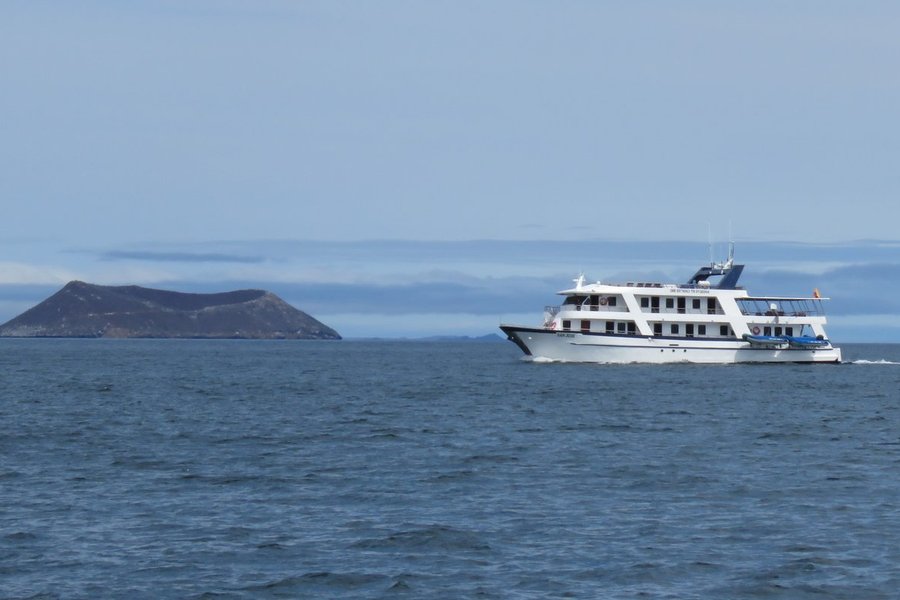
We traveled to the Galapagos Islands in early September. We spent time in Quito,Ecuador on both ends of the trip. We spent 8 days in the Galapagos on a 16 passenger cozy boat. the crew were great and they only roughness we experienced was during the night travel when the boat rocked and rolled due to the Humboldt current and our speed. When you visit the islands your itinerary isn't set definitely until you sail. The govt monitors the numbers on the islands by day. We left from San Cristobal and traveled to several different islands. I was initially worried that we would not find any animals but I was amazed at their numbers and that they didn't scatter when we arrived! The birds, sea lions, penguins etc were all amazing. We had a naturalist with us and he had tons of info to share. The trip was well managed and we spent a morning in one location, had lunch and a rest period and then went out again until dinner time. The climate was warm and sunny each day but the water was extremely cold due to the current. When we went, many of the birds had their babies and that was pretty amazing. No matter when you go to the Galapagos, you are guaranteed to see a lot of birds, iguanas, sea lions, tortoises,lizards, albatross, frigates, blue footed boobies, herons, warblers, finches etc...it is nature at its' best!
Keep reading 0 comments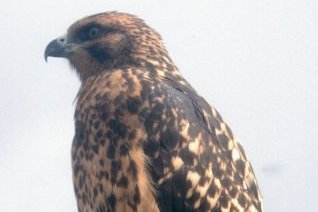
The usual problem with taking “wild life” holidays is the uncertainty as to whether one will actually see the creatures one is traveling so far (and often paying so much!) to see. Over the years we have seen most of the animals we have gone to see – but it has sometimes taken several visits to do so – thus we have failed to see Gorillas in Gabon, Wolves in Alaska and Jaguars in Guyana.
A great thing about the Galapagos is that the animals WILL turn up on cue. There may not be a vast variety of species but, if an island is supposed to have a species, you will have to be very unlucky not to see it!!
And on top of that of course they are incredibly tame.
Darwin wrote at one point in his diary - 'I pushed off a branch with the end of my gun, a large hawk'.
It was wonderful to have this episode confirmed as we landed on an island and there in front of us was a Galapagos Hawk. As we approached closer and closer it did not attempt to move. We did not of course push it off its perch with a gun or anything else but there was no doubt that we could have if we had been so minded!
Keep reading 0 comments
